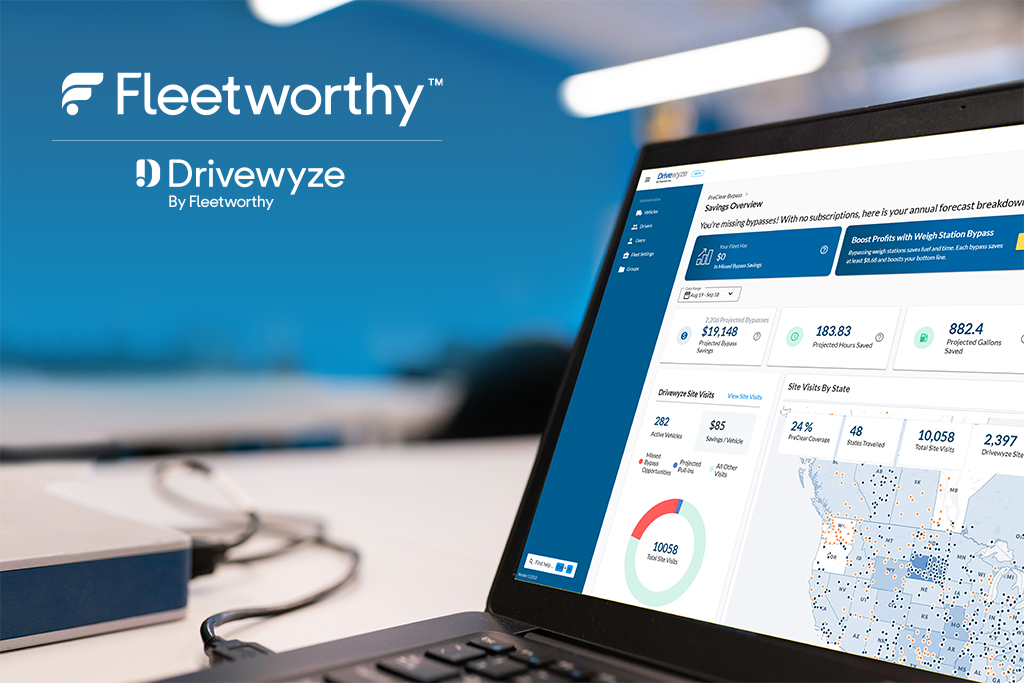Fleet safety is more than just meeting legal obligations—it’s a commitment to safeguarding lives, assets, and the reputation of your organization. A well-structured fleet safety program not only ensures compliance but also reinforces operational efficiency, mitigates risks, and upholds a company’s ethical responsibilities.
Let’s explore why fleet safety matters, the risks of neglect, and how a comprehensive approach can transform your operations.
Why Fleet Safety Matters
Prioritizing safety reduces the likelihood of accidents, protecting drivers, passengers, and the general public. It also minimizes vehicle downtime and associated costs, keeping your fleet running efficiently. Beyond compliance, it sends a strong message about your values, fostering trust among employees, partners, and the communities you serve. When implemented effectively, fleet safety programs deliver measurable results in productivity, cost reduction, and customer satisfaction.
The Risks of Neglecting Fleet Safety
Ignoring fleet safety protocols can lead to serious consequences that extend far beyond immediate financial losses. These include:
- Increased Accident Rates: Higher risks of injury, fatality, and damage to vehicles.
- Legal and Financial Liabilities: Costs related to lawsuits, fines, and increased insurance premiums.
- Operational Disruptions: Vehicle downtime due to accidents or neglected maintenance.
- Reputational Damage: Loss of customer trust and negative public perception.
The long-term impact of poor safety management is costly, often outweighing the investment required to establish preventive measures.
The Benefits of a Comprehensive Fleet Safety Program
A well-rounded safety program is a proactive investment that pays off in multiple ways:
- Reduced Accidents and Downtime: By addressing risks upfront, accidents and emergency repairs are minimized, allowing fleets to operate at full capacity.
- Enhanced Driver Safety: Policies and training programs empower drivers to adopt safe driving practices, reducing incidents and boosting confidence.
- Cost Savings: Lower insurance premiums, fewer legal expenses, and reduced vehicle wear-and-tear contribute to financial stability.
- Stronger Workplace Culture: Employees feel valued and protected, leading to higher morale and retention.
- Regulatory Compliance: Staying ahead of evolving transportation laws ensures smooth operations.
Building an Effective Fleet Safety Culture
Fleet safety thrives in organizations that make it part of their core values. It begins with leadership commitment and is reinforced through consistent communication, training, and adherence to safety policies. Here are the key components:
Driver Safety Training: A Cornerstone of Fleet Safety
Comprehensive driver safety training is essential to ensure that drivers are prepared to handle the challenges of diverse road conditions while maintaining the highest safety standards. By investing in a robust training program, fleet operators can significantly reduce accidents, improve driver performance, and build a culture of responsibility within their organization.
1. Comprehensive Onboarding for New Drivers
The journey to safer operations begins with onboarding. A structured onboarding process introduces new drivers to company policies, expectations, and best practices. It includes:
- Road Safety Guidelines: Familiarization with federal and state driving laws, company-specific rules, and safety protocols.
- Vehicle-Specific Training: Education on the unique features and operation of fleet vehicles, including safety systems like collision avoidance and lane assist technology.
- Cultural Integration: Emphasis on the company’s safety-first values to align new drivers with organizational goals.
2. Regular Defensive Driving Workshops
Defensive driving courses are a cornerstone of driver education, providing actionable strategies to anticipate and respond to potential road hazards. Key topics covered include:
- Hazard Perception: Identifying risks such as distracted drivers, inclement weather, and poor road conditions.
- Safe Following Distances: Maintaining appropriate spacing to avoid rear-end collisions.
- Emergency Maneuvering: Techniques for safe braking, steering, and navigating through sudden obstacles.
Periodic workshops ensure drivers remain updated on best practices and refresh their knowledge as road conditions and risks evolve.
3. Addressing Fatigue and Distraction
Driver fatigue and distraction are significant contributors to road accidents. Training programs should highlight:
- Fatigue Management: Encouraging adequate rest, recognizing signs of fatigue, and adhering to Hours of Service (HOS) regulations.
- Distraction Avoidance: Emphasizing the dangers of texting, using mobile devices, or engaging in other non-driving activities while on the road.
Interactive sessions and real-world scenarios can help reinforce the importance of staying focused and alert.
4. Substance Abuse Awareness and Policies
Ensuring drivers understand the risks associated with substance abuse is vital for fleet safety. Training should cover:
- Company Policies: Clear communication of zero-tolerance policies regarding drugs and alcohol.
- Education on Impairment Risks: Understanding how even over-the-counter medications can affect reaction times and decision-making.
- Support Systems: Access to counseling or rehabilitation resources for drivers in need, fostering a supportive yet firm approach to compliance.
5. Specialized Training for Unique Scenarios
Fleet operations often include driving in challenging or unusual environments. Tailored training modules can address:
- Seasonal Hazards: Navigating snow, ice, or heavy rain safely.
- Urban vs. Rural Driving: Managing dense city traffic or remote areas with limited infrastructure.
- Heavy Cargo or Hazardous Materials: Training for proper handling, securing, and transport of specialized loads.
6. Ongoing Evaluation and Feedback
Training isn’t a one-time event—it’s a continuous process. To ensure effectiveness, companies should implement:
- Regular Evaluations: Periodic assessments of driver skills through tests, simulations, or ride-alongs.
- Real-Time Feedback: Utilizing telematics and dashcam data to identify and address unsafe behaviors as they occur.
- Recognition Programs: Rewarding drivers for consistent safety performance to reinforce positive behaviors.
Driver safety training is more than just a checklist item—it’s a dynamic strategy to empower drivers, reduce risks, and enhance overall fleet performance. By equipping drivers with the tools and knowledge they need, companies build safer roads, healthier work environments, and stronger operational efficiency.

Vehicle Maintenance: The Backbone of Fleet Safety and Efficiency
Effective vehicle maintenance is a critical element of fleet management, ensuring that vehicles remain in optimal condition and minimizing the risk of mechanical failures that could jeopardize safety, cause downtime, or lead to costly repairs. A robust maintenance program safeguards both drivers and assets.
1. The Role of Routine Inspections
Routine inspections form the first line of defense against mechanical issues. By identifying potential problems early, fleets can prevent small issues from escalating into major failures. Key elements of routine inspections include:
- Pre-Trip Inspections: Conducted by drivers before hitting the road, these checks verify critical components such as brakes, lights, tires, and fluid levels. Pre-trip inspections help ensure that vehicles are roadworthy and compliant with safety standards.
- Post-Trip Inspections: At the end of each trip, drivers assess the vehicle’s condition, reporting wear and tear or any anomalies. This step ensures that necessary repairs are flagged promptly, reducing the likelihood of unexpected breakdowns.
- Documentation: Recording inspection results provides a paper trail for compliance and facilitates efficient communication between drivers and maintenance teams.
2. Preventive Maintenance Programs
Preventive maintenance involves regular servicing to maintain vehicles in peak condition and reduce the likelihood of failures. A well-planned preventive maintenance schedule includes:
- Scheduled Service Intervals: Routine oil changes, brake inspections, tire rotations, and engine tune-ups based on manufacturer recommendations.
- Component Replacement: Proactively replacing parts like belts, filters, and spark plugs before they fail.
- Seasonal Maintenance: Preparing vehicles for extreme weather conditions, such as adding snow tires or checking air conditioning systems.
This proactive approach extends the lifespan of fleet vehicles, ensures reliability, and minimizes unplanned downtime.
3. Leveraging Technology for Maintenance Management
Modern technology has revolutionized vehicle maintenance, providing tools to streamline and optimize the process. Key advancements include:
- Maintenance Tracking Systems: These systems monitor service schedules, send alerts for upcoming maintenance tasks, and track repair histories. By automating reminders, fleets can avoid missed services and reduce the risk of breakdowns.
- Telematics Data: Telematics systems provide real-time insights into vehicle performance, such as engine diagnostics and fuel efficiency. These insights help identify issues before they become critical, allowing for timely intervention.
- Predictive Analytics: Using data to predict when components are likely to fail, enabling fleets to replace them proactively and avoid unscheduled downtime.
4. Comprehensive Maintenance Checklists
A structured maintenance program incorporates detailed checklists to ensure thorough inspections. Common checklist items include:
- Braking System: Verifying brake pad thickness, fluid levels, and overall functionality.
- Tires: Checking for proper inflation, tread depth, and signs of wear or damage.
- Lighting and Visibility: Inspecting headlights, taillights, turn signals, and wipers to ensure clear visibility and communication with other drivers.
- Engine and Fluid Levels: Monitoring oil, coolant, transmission fluid, and other essential systems for leaks or low levels.
Using standardized checklists ensures consistency and helps maintenance teams address all critical areas.
5. Emergency Repairs and Contingency Planning
Despite best efforts, emergencies can arise. A strong maintenance program includes a plan for handling unexpected repairs:
- Mobile Repair Services: Partnering with mobile mechanics to address issues on the road quickly.
- Spare Vehicle Availability: Maintaining backup vehicles to minimize disruptions during major repairs.
- Training Drivers in Basic Repairs: Educating drivers on handling minor issues like changing a tire or jump-starting a battery can save time and reduce delays.
6. Compliance with Regulatory Standards
Vehicle maintenance is also essential for regulatory compliance. Staying in line with federal and state guidelines, such as those from the Federal Motor Carrier Safety Administration (FMCSA), includes:
- Regular Inspections: Ensuring vehicles pass mandatory safety inspections.
- Accurate Records: Keeping detailed logs of all maintenance activities for audits or investigations.
- Adherence to Safety Standards: Ensuring all vehicles meet legal requirements for safe operation.
Non-compliance can result in fines, legal issues, and the suspension of operations, making maintenance not just a safety priority but a legal necessity.
Incident Reporting and Analysis: A Key to Continuous Safety Improvement
Incident reporting and analysis play a vital role in fleet safety management, providing the framework for understanding and mitigating risks. A structured approach to documenting, investigating, and learning from accidents and near-misses empowers organizations to proactively address vulnerabilities and refine safety policies.
1. Establishing a Robust Incident Reporting System
An effective reporting system is the foundation for identifying and addressing safety challenges. It should be easy to use, comprehensive, and accessible to all employees. Key features of a strong incident reporting system include:
- Standardized Reporting Forms: Ensuring consistency in the type and detail of information collected, such as time, location, and conditions during the incident.
- Timely Submission: Requiring reports to be submitted immediately or as soon as safely possible after an incident to ensure accuracy and relevance.
- Confidentiality Assurance: Encouraging honesty by assuring employees that reports are used for improvement, not punishment.
A well-designed system captures a complete picture of each incident, forming the basis for effective analysis.
2. Comprehensive Investigation Procedures
Once an incident is reported, a detailed investigation is essential to uncover the root causes. This process should involve:
- Immediate Response: Ensuring the safety of all individuals involved, securing the scene, and collecting initial information.
- Data Collection: Gathering evidence such as photographs, witness statements, telematics data, and vehicle inspection reports.
- Root Cause Analysis: Identifying underlying factors that contributed to the incident, such as driver fatigue, mechanical failure, or environmental hazards.
By focusing on root causes rather than symptoms, organizations can implement changes that address the true origins of risks.
3. Identifying Trends and Patterns
Incident data should be aggregated and analyzed over time to reveal recurring issues or systemic weaknesses. This includes:
- Trend Analysis: Looking for patterns in the types, locations, and causes of incidents.
- High-Risk Areas: Identifying specific routes, times of day, or environmental conditions that pose increased risks.
- Driver Behavior Insights: Analyzing telematics and dashcam data to identify risky driving habits, such as speeding, hard braking, or distracted driving.
Understanding trends allows organizations to prioritize their safety efforts where they will have the greatest impact.
4. Refining Safety Policies and Procedures
Findings from incident investigations should inform updates to safety protocols, ensuring that lessons learned lead to tangible improvements. This process may include:
- Policy Adjustments: Modifying rules around vehicle inspections, rest breaks, or driving in adverse weather conditions.
- Targeted Training: Addressing specific weaknesses identified during investigations, such as defensive driving or emergency response techniques.
- Infrastructure Improvements: Enhancing vehicle technology, upgrading maintenance schedules, or redesigning workflows to eliminate hazards.
Continuous refinement of safety measures helps reduce the likelihood of future incidents.
5. Communicating Findings and Implementing Change
Transparency and communication are key to ensuring that lessons learned from incidents lead to meaningful change. Best practices include:
- Sharing Insights: Regularly updating drivers and staff on trends, findings, and policy changes.
- Training Updates: Incorporating new lessons into driver education programs and safety workshops.
- Feedback Loops: Encouraging employees to provide input on the effectiveness of changes and suggest additional improvements.
Effective communication fosters a culture of safety and accountability across the organization.
Incident reporting and analysis are not just reactive measures—they are proactive tools for creating safer roads, protecting assets, and building a reputation for operational excellence. By committing to a structured process, organizations can transform challenges into opportunities for growth and set a new standard for fleet safety.
Take the Next Step to Enhance Fleet Safety
Are you ready to transform your fleet operations and prioritize safety without compromise? Fleetworthy offers a suite of services designed to simplify compliance, enhance safety, and optimize fleet performance. From toll management to comprehensive driver training and regulatory consulting, our solutions are tailored to meet the unique needs of your operation.
Contact us today to explore how we can partner with you to achieve your safety and compliance goals.




